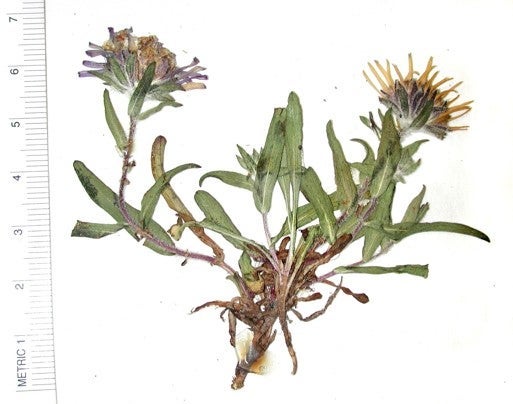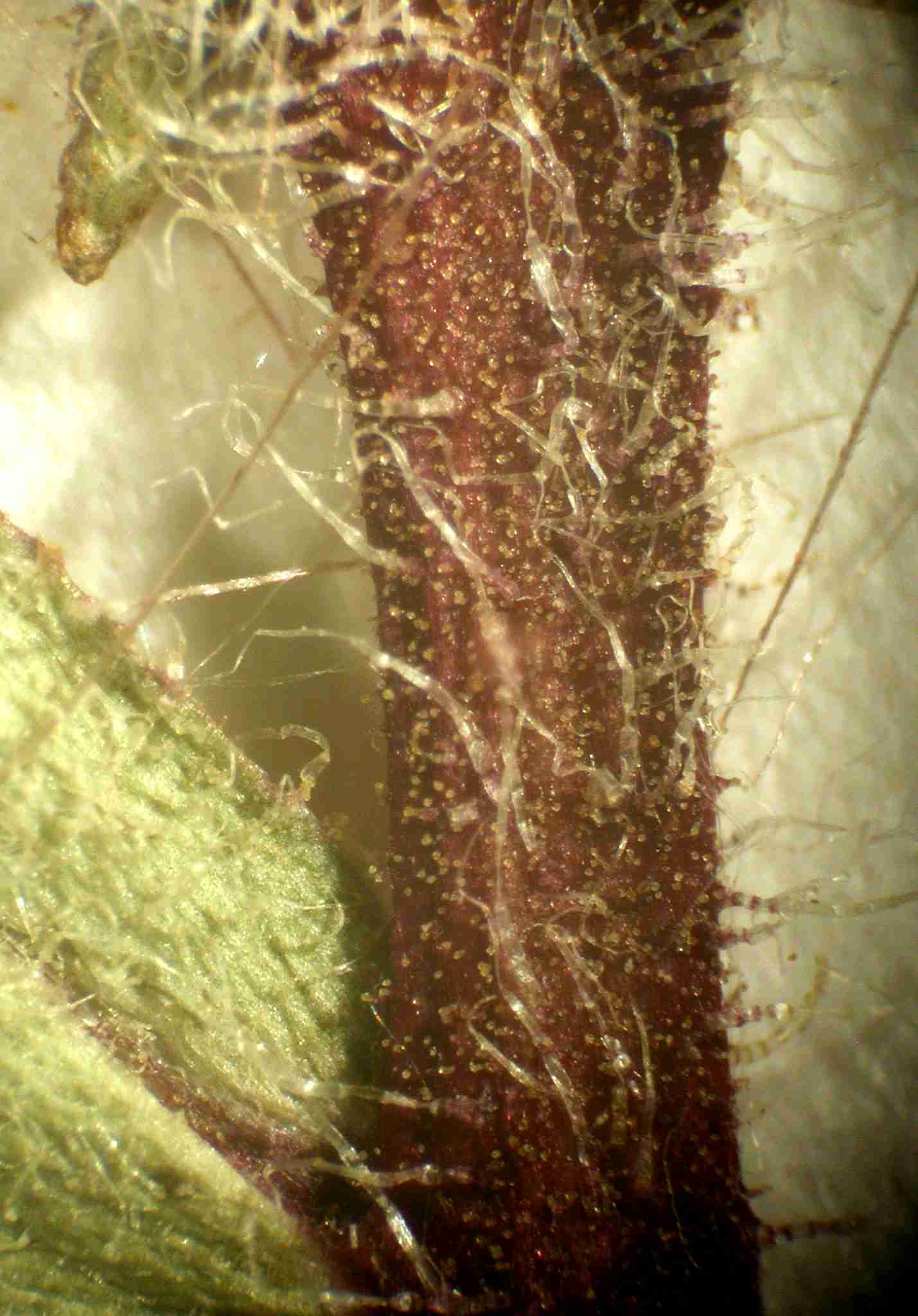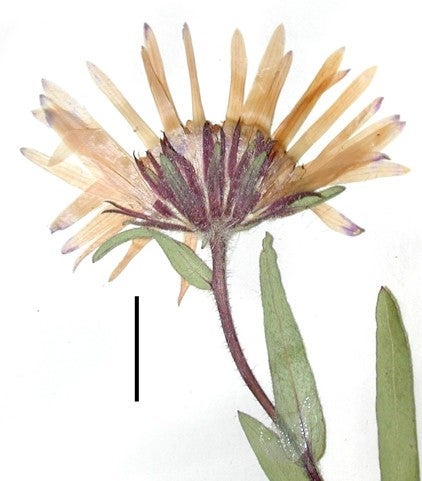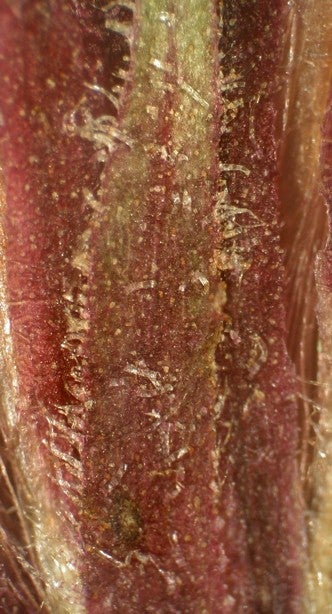Pygmy Aster
Symphyotrichum pygmaeum (Lindl.) Brouillet & Selliah is native to open, active, moist sand dunes, sandy or silty stream banks and terraces, usually cyclically disturbed gravelly tundra and tundra slopes 0–200+ m ele. in northern Alaska, Northwest Territories, and Nunavut (Brouillet et al. 2006 FNA). The species is distinquished by its 1.5–15 cm tall decumbent to ascending eglandular stems, lanceolate to oblong-lanceolate or oblong sparsely sparsely woolly and eglandular leaves (sometimes sparsely stipitate-glandular), and solitary heads with eglandular densely villous to lanate peduncles and 9–12.5 mm high involucres with ± foliaceous woolly ± minutely stipitate-glandular (apically) outer phyllaries. The chromosome number is unknown.
Data on distribution and illustration can be found at the Flora of the Canadian Arctic Archipelago posting.
Symphyotrichum pygmaeum has long been included within or associated with x= 9 Eurybia sibirica until Brouillet and Selliah (2005) transferred the species to x=5 Symphyotrichum subg. Virgulus based on DNA sequence data. Selliah and Brouillet (2008) showed that the S. pygmaeum and S. yukonensis with closely related.
The species is of conservation concern.
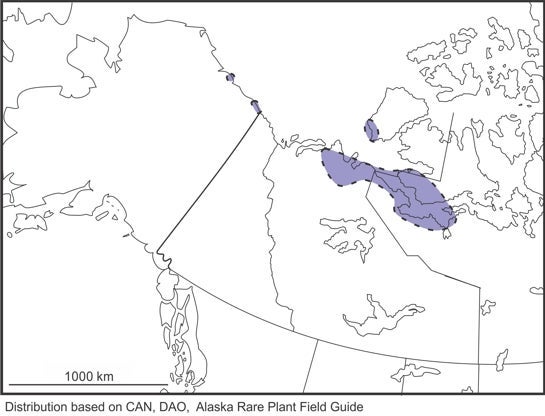
Last revised 16 May 2025 by J.C. Semple
© 2025 J.C. Semple, including all photographs unless otherwise indicated
1-4. Symphyotrichum pygmaeum. 1. Habit of small plant, Scotter & Zoltai 90-446 DAO, far northwestern Nunavut, Canada. 2-4. Stem, head and outer phyllary detail, Barry s.n., northern coastal region, Northwest Territories, Canada.
Brouillet, L. and S. Selliah. 2005. Symphyotrichum pygmaeum: transfer of Eurybia pygmaea from the eurybioid grade to the subtribe Symphyotrichinae (Asteraceae: Asteae). Sida 21: 1633-1635.
Selliah, S. & Brouillet, L. 2008. Molecular phylogeny of the North American eurybioid asters, Oreostemma, Herrickia, Eurybia, and Triniteurybia (Asteraceae, Astereae) based on the ITS and 3’ETS nuclear ribosomal regions. Botany 86: 901-915.




